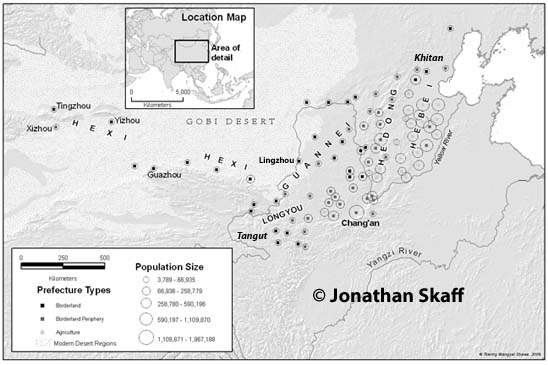
Sogdian and Turk
Lushan=Rokshan “Light”
Foster son of Zhang Shougui (d. 739)
Bodyguard of 8,000 Tongra, Qay and Khitan “foster sons”
Political conflicts with court officials
Generals
Shi Siming
Tian Chengsi
Later Liang 907-923
Later Tang/T’ang (Shatuo/Sh’a-t’o Turks) 923-936
Later Ji/Chi 936-947
Later Han 947-950
Later Zhou/Chou 95l-960
N. Song (960-1127)
Capital at Kaifeng
S. Song (1127-1279)
Hangzhou (Hang-chou)
Traditional View of Northern Dynasties
Barbaric Oppressors
Chinese practicing agriculture
Source of wealth
Song population 20 times larger
Only a few imperial Chinese dynasties lasted longer
Han, Tang, and Song
Pastoral nomadic people
W. Manchuria homeland (Liao River)
Spoke an Mongolic language
Repetition of late Han-Northern Dynasties pattern
Tang or Turk Uighur vassals 7th-8th centuries
Khitan contingent in An Lushan’s forces, 755

Tribal leader, 907
Bypassed tribal councils 910, 913
Emperor Taizu (r. 916-926)
Personal talent of Abaoji
Exploit power vacuum
China disunified since late Tang 880s
Inner Asia in disarray since fall of Uighur Turks in 840s
Multiple capitals
Dual administration
200,000 bolts of silk and 100,000 ounces of silver annually
Emperors address each other as brothers
300,000 bolts of silk, 1 million strings of coins, and 300,000 ounces of
silver annually
Jurchen ruler as uncle/Song ruler as nephew
Arose on fringes of Chinese civilization
Process seen earlier in Korea, Japan, Vietnam, etc.
Bureaucratic government
Succession
Management of agricultural populace
Written language
| Grand Khan of Yuan (China) | Il-Qans (Iran) |
|---|---|
| Khubilai (Qubilai), r. 1260-1294 | Hülegü, 1256-65 |
| Abaqa, r. 1265-82 | |
| Ahmad/Tegüder, r. 1282-4 | |
| Arghun, r. 1284-91 | |
| Temür, 1294-1307 | Geikhatu, r. 1291-5 |
| Ghazan, 1295-1304 (Convert to Islam) | |
| Qaishan, r. 1307-11 | Öljeitü, r. 1304-16 (Christian convert to Islam) |
| Buyantu, r. 1311-20 | Abu Sa’îd, 1316-1335 |